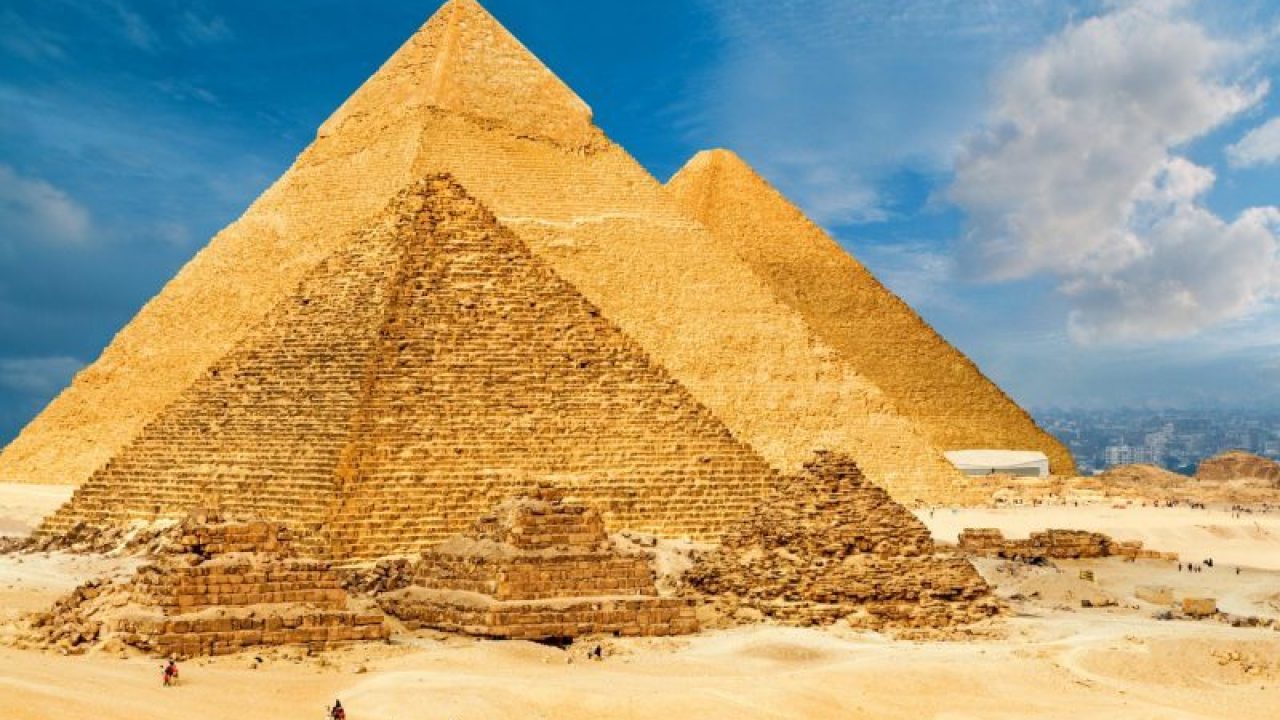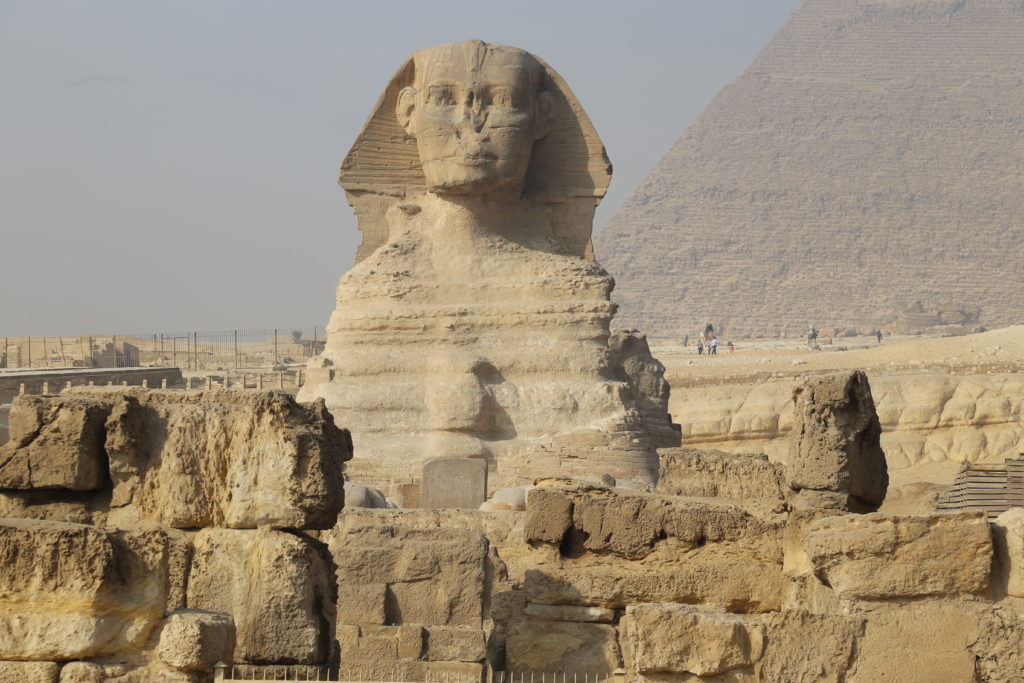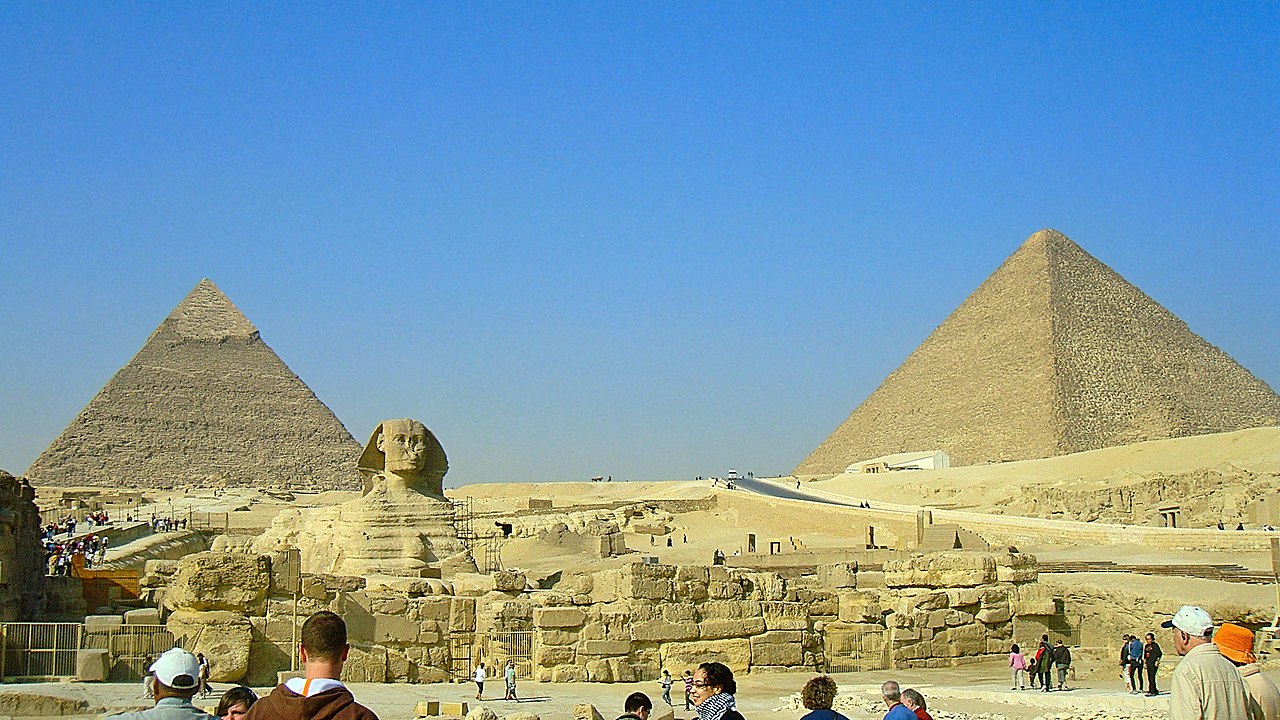Welcome, intrepid travelers and history enthusiasts, to a journey that transcends time and unveils the enigmatic marvel that is the Giza Necropolis. As the sun casts its golden glow upon these timeless monuments, we find ourselves drawn into a world where ancient mysteries converge with architectural grandeur. Join me, as we traverse the sands of time and delve into the heart of Egypt’s historical tapestry.
In the shadow of the Great Pyramids, where whispers of the past linger amidst the desert winds, the Giza Necropolis stands as a testament to human ingenuity and the quest for eternal legacy. Here, amidst the grandeur of the pyramids and the enigmatic Sphinx, we embark on a voyage of discovery that unearths secrets buried for millennia.
Unveiling the Past: Guardians of Immortality and Glory

As the sun rises over the horizon, the Great Pyramids take on an ethereal glow, casting shadows that tell stories of pharaohs and laborers toiling side by side to erect these colossal structures. Standing sentinel over the desert, these pyramids were not just tombs; they were portals to the afterlife, meticulously designed to ensure safe passage for the departed rulers. The very word “pyramid” evokes a sense of wonder, its angular symmetry defying the passage of ages.
- Guardians of Immortality and Glory. As dawn breaks over the vast expanse of the Giza Plateau, an awe-inspiring sight emerges from the shadows – the Great Pyramids of Giza. These monumental structures, whose scale defies comprehension, have stood as guardians of immortality and symbols of unparalleled glory for over four millennia. The very essence of these pyramids resonates with the aspirations and beliefs of an ancient civilization that strove for transcendence.
- Pharaohs and Laborers: A Monumental Endeavor. To envision the construction of the pyramids is to peer into the ambition and dedication of the ancient Egyptians. Pharaohs, considered god-kings, pursued a legacy that extended beyond life on Earth. Laborers, artisans, and engineers pooled their expertise to create these masterpieces, their collective efforts etched into the very stones that comprise the pyramids. These towering monuments served as gateways to the afterlife, intended to secure safe passage for pharaohs as they embarked on their celestial journey.
- The Immensity of Achievement. Standing at the base of the Great Pyramid of Khufu, one cannot help but be overwhelmed by the immensity of this achievement. Over two million limestone blocks, each weighing multiple tons, were quarried, transported, and meticulously placed to form this pyramid. The precision with which these massive stones were aligned and fitted remains a testament to the ingenuity and resourcefulness of a civilization that lacked the technological marvels of the modern era.
- The Sun God’s Embrace. As the sun arcs across the sky, casting shifting shadows on the pyramids’ sides, one is reminded of the profound connection between these structures and the cosmos. The ancient Egyptians revered the sun god Ra, and the pyramids’ orientation reflects this reverence. The sides of the pyramids align with the cardinal points of the compass, while the geometry of these structures exhibits an understanding of cosmic proportions.
- Enduring Legacy of Belief. The pyramids’ significance transcends their role as colossal tombs. They encapsulate the spiritual and religious beliefs of a society that believed in an eternal journey beyond mortal life. As visitors from around the world stand before these architectural marvels, they stand witness to a civilization’s unwavering belief in a grand cosmic order.
- Khufu’s Pyramid: A Monument to Mastery. The Great Pyramid, attributed to Pharaoh Khufu, stands as the oldest and largest of the three pyramids. Its construction required meticulous planning, architectural brilliance, and an intricate understanding of geometry. The pyramid’s original casing stones, polished to a brilliant white, have long since been weathered away, but the enduring majesty of the structure endures.
- Khafre’s Pyramid: A Testament to Continuity. Adjacent to the Great Pyramid stands the Pyramid of Khafre. Its distinctive feature, a casing of Tura limestone that caps its pinnacle, gives it a sense of timeless grandeur. The Sphinx, positioned nearby, watches over this pyramid, creating an enigmatic connection between the two structures. Khafre’s pyramid, slightly smaller in scale, echoes the glory of its predecessor while adding its unique mark to the Giza skyline.
- Miraculous Mathematics and Mosaics of Meaning. Beyond their physical enormity, the pyramids embody mathematical and symbolic precision. The ratios of their dimensions, angles of inclination, and alignments with celestial bodies reveal a mastery of mathematics and a belief in the interconnectedness of the universe. Hieroglyphics that adorn the pyramid interiors convey not just historical accounts, but a mosaic of meaning that bridges the mortal realm with the divine.
As we stand amid the majesty of the Giza Necropolis, the pyramids rise as monolithic sentinels, transcending mere architecture to become vessels of immortality. The legacy of the ancient Egyptians endures in these structures, echoing their reverence for life, death, and the celestial beyond. Join us as we journey deeper into the heart of Giza, where each stone carries a tale and every shadow conceals a secret.
The Sphinx: Echoes of Majesty

Behold the Sphinx, a regal figure with the body of a lion and the visage of a pharaoh. Carved from a single limestone block, this monumental marvel exudes an aura of mystery that has captivated minds for centuries. Was it a guardian of secrets? A celestial sentinel? The gaze of the Sphinx seems to hold the answers, concealed within its timeless eyes.
Architectural Marvels and Astronomical Alignments: Engineering Feats and Astronomical Alignments

Venturing beyond the surface, we uncover the remarkable engineering prowess that birthed these monuments. The alignment of the pyramids with celestial bodies speaks to an advanced understanding of astronomy. The precision with which these structures were erected is a testament to the ingenuity of a civilization that revered both life and the afterlife.
Echoes of a Bygone Era: Pyramid Complexes

The pyramids were not solitary structures but were enveloped by vast complexes that served as epicenters of rituals and reverence. The Pyramid of Khafre, adorned with the enigmatic Sphinx, stands as a testament to the intricate connection between pharaohs and their divine legacy. The Valley Temple, intricately linked to the pyramids, whispers secrets of ceremonies long past.
| Pyramid | Pharaoh | Height (meters) |
|---|---|---|
| Great Pyramid | Khufu | 146.6 |
| Pyramid of Khafre | Khafre | 136.4 |
| Pyramid of Menkaure | Menkaure | 65 |
Unraveling the Enigmas: Lost Knowledge and Pyramid Construction

The construction techniques of the pyramids remain a subject of debate and awe. Theories abound, from intricate ramps to advanced lever systems. Yet, the true methods remain shrouded in the mists of history, inviting us to marvel at the minds that birthed these monolithic marvels.
Hieroglyphics: Portals to the Past

As we step into the pyramids, the walls adorned with hieroglyphics become portals to the past. These intricate symbols tell tales of pharaohs and gods, of life’s journey and the mysteries beyond. Deciphering these glyphs, we inch closer to understanding a culture that revered the afterlife as much as the present.
FAQs about Giza Necropolis
Q: What is the Giza Necropolis?
A: The Giza Necropolis is an ancient burial site in Egypt, home to the iconic Great Pyramids and the Sphinx. It’s a testament to the remarkable achievements of ancient Egyptian civilization.
Q: How were the pyramids built?
A: The exact construction methods of the pyramids remain a subject of intrigue and debate. While various theories suggest the use of ramps, skilled labor, and advanced engineering, the precise techniques continue to elude definitive explanation.
Q: Why were the pyramids constructed?
A: The pyramids served as monumental tombs for pharaohs and their consorts. These awe-inspiring structures were designed to house not only the physical remains of the rulers but also their essential possessions and treasures needed for the afterlife journey.
Q: What’s the significance of the Sphinx?
A: The Sphinx is a symbol of majesty and mystery. With the body of a lion and the head of a pharaoh, it’s believed to represent royal power and guardianship. Its purpose and the identity of the pharaoh it represents remain subjects of speculation.
Q: Can visitors enter the pyramids?
A: Yes, some of the pyramids are open to visitors, offering them a unique opportunity to explore the inner chambers and corridors. However, access might be limited in certain areas to preserve these ancient structures.
Q: What do hieroglyphics inside the pyramids reveal?
A: Hieroglyphics found within the pyramids provide insights into the beliefs, rituals, and daily life of ancient Egyptians. They offer glimpses into the pharaohs’ divine connection, their relationships with gods, and the importance of the afterlife.
Q: How does the alignment of the pyramids showcase astronomical knowledge?
A: The alignment of the pyramids with celestial bodies, particularly with the Orion constellation, suggests the ancient Egyptians possessed a sophisticated understanding of astronomy. This alignment might have held both religious and practical significance.
Q: Are there undiscovered chambers within the pyramids?
A: Ongoing research and exploration have revealed new insights and hidden chambers within some pyramids. These discoveries shed light on the complexity of pyramid architecture and the rituals associated with them.
Q: What’s the age of the Giza Necropolis?
A: The Giza Necropolis dates back over 4,500 years, to the reign of the Fourth Dynasty pharaohs. Its enduring legacy continues to captivate and inspire people worldwide.
Q: How has the Giza Necropolis influenced modern culture?
A: The Giza Necropolis has left an indelible mark on popular culture, appearing in literature, films, art, and more. Its iconic status showcases its enduring fascination and its role as a bridge between the ancient and contemporary worlds.
A Continuation of Timeless Legacy
As the desert winds whisper tales of ages past, the Giza Necropolis stands as an everlasting tribute to human aspiration and the quest for permanence. The grandeur of the pyramids, the mysteries of the Sphinx, and the allure of the hieroglyphics converge to create a tapestry of history that captures the imagination.
In our journey through time, we’ve only scratched the surface of the wonders that await at the Giza Necropolis. As we bid adieu to this ancient realm, let it be a mere prelude to the adventures that beckon in the realm of exploration. Unveil the secrets, tread the sands, and let history’s embrace guide you to new horizons.






















